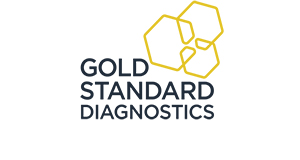NovaLisa Chagas, (T.cruzi), ELISA Kit
Chagas, ELISA Kit
Artikelnummer
NOVTRYP0570
Verpackungseinheit
96 Tests
Hersteller
Gold Standard Diagnostics
Verfügbarkeit:
wird geladen...
Preis wird geladen...
We are constantly developing and improving our products in order to meet our costumer's needs. As a result we present our new NovaLisa® Chagas (Trypanosoma cruzi) IgG ELISA where we were able to increase both the sensitivity (99%) and specificity (99%).Trypanosoma cruzi is the causative agent of the Chagas' disease (American trypanosomosis), which is a parasitic disease that affects about 7 to 8 million people worldwide, mostly in Latin America. However, in the past decades, it has been increasingly detected in Canada, USA and many European and Western Pacific countries.It is caused by the flagellate protozoan parasite Trypanosoma cruzi. Chagas' disease is transmitted to animals and humans by blood-sucking triatomine insects ('kissing bugs') in the family Reduviidae. In the intestine of the vector, the parasites convert into intensively multiplying epimastigote stages, and later into trypomastigote forms that are released with the feces when the triatomine insect takes a blood meal.These insects become infected when they feed on the blood of animals that serve as reservoirs for the parasite. Wild and domestic mammals including humans, dogs, cats, rodents, opossums, armadillos and bats are known reservoirs of Trypanosoma cruzi. The natural habitats of reduviid bugs are nests, animal dens, and other places frequented by vertebrate animals whose blood provides their sustenance. Some species of Reduviidae have invaded domestic habitats. During the day, triatomine insects hide in crevices in the walls and roofs of poorly constructed housing in rural areas. The bugs emerge at night, when the inhabitants are sleeping.The trypomastigotes enter the human host through the bite wound or through intact mucosal membranes, such as the conjunctiva. Once in the human body, the parasites are phagocytosed by macrophages or invade other cells, mainly muscle cells (heart, skeletal, or smooth musculature) as well as neurological cells. Within the cells, they differentiate into amastigotes and multiply. Cells filled with up to 500 parasites are called 'pseudocysts'. After 5 days the parasites convert back to trypomastigotes and return to the bloodstream.Chagas' disease has an acute phase and a chronic latent stage. The acute phase, which follows an incubation period of 7-30 days, may have no or very mild symptoms. Symptoms include: fever, edema, lymph node swelling, hepatomegaly, splenomegaly, myocarditis and less frequently, meningoencephalitis. The most recognized symptoms of acute Chagas infection are the Romaña sign (conjunctivitis with eyelid edema) or the chagoma (local, inflammatory dermal reaction).Beginning about 8-10 weeks after the acute phase the infection turns to an inapparent phase. Clinical manifestations of the chronic phase, often starting 10-20 years after the acute phase, are cardiopathy, digestive tract damage and neuropathies.Besides from vector-borne Chagas' disease, Trypanosoma cruzi can also be transmitted through blood transfusions, organ transplants, transplacentally, or contaminated food and drink.
| Artikelnummer | NOVTRYP0570 |
|---|---|
| Hersteller | Gold Standard Diagnostics |
| Hersteller Artikelnummer | TRYP0570 |
| Verpackungseinheit | 96 Tests |
| Mengeneinheit | PAK |
| Haltbarkeit | 18 Monate |
| Specimen | Plasma, Serum |
| CE-IVD | ja |
| Produktinformation (PDF) |
|
| MSDS (PDF) |
|

 English
English





